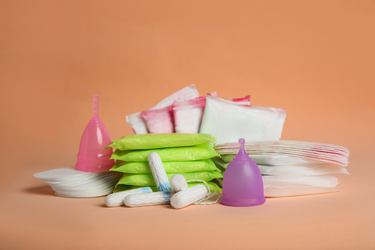The History of Menstrual Care: Period Products
Posted by Wombilee on Nov 5th 2025

The way we take care of periods has evolved significantly over time. Long ago, women didn’t have the modern pads and tampons we use today. Instead, they made do with whatever materials they could find. However, today’s period products are far more advanced, offering better comfort and convenience. Let’s take a look at how period care has transformed over the years!
Early Times
What Did Women Use Before Pads and Tampons?
Before the invention of modern pads and tampons, women relied on materials like cloth, rags, grass, and even animal skins to manage their menstrual cycles. These early solutions were far from comfortable and required frequent washing and reusing. In Ancient Egypt, women crafted pads from papyrus, a plant native to the region, while in other parts of the world, alternatives such as moss, rags, and grass were used. Though these methods served their purpose, they were less than ideal in terms of comfort and convenience.
1800s: The First Disposable Pads
The 1800s marked a turning point in the evolution of period care, as inventors began developing more practical solutions. In 1880, two brothers, Thomas and William Southall, created the first disposable pads available for purchase. Made from wood pulp, these pads were more absorbent than previous homemade alternatives but still quite bulky.
Then, in 1897, Johnson & Johnson entered the market with their own sanitary pads, crafted from cotton and gauze. While these were an improvement over earlier versions, they were still far from as thin or comfortable as the pads we use today. Around the same time, tampons made from cotton and wool were invented, offering a new option for period management; though they were not nearly as convenient or easy to use as the tampons we rely on now.
1900s
Disposable Products Become Popular
By the early 1900s, disposable pads and tampons gained popularity as women sought products that didn’t require washing or reusing. The convenience of disposable options made a significant difference in managing periods.
In 1920, Kimberly-Clark introduced the first mass-produced disposable pad, revolutionizing period care and making things much more convenient for women.
Then, in 1956, Mary Beatrice Davidson Kenner made a groundbreaking contribution with her invention of a belt system designed to hold sanitary pads securely in place. This innovation made using pads much easier and more comfortable. Sadly, due to racial discrimination, it took years before her invention was commercially produced, delaying its impact on the market.
1960s and 1970s
Tampons and More Freedom
In the 1960s and 1970s, tampons gained popularity, especially with the introduction of the tampon applicator, which made them much easier to use. Women embraced tampons for the freedom they offered, allowing them to swim, play sports, and stay active without worrying about leaks.
During this period, menstrual cups also began to emerge as an alternative, offering a reusable option. However, they didn’t gain widespread use at the time, as most women still preferred pads or tampons for convenience and comfort.
1980s and 1990s
Better Products for Women
By the 1980s and 1990s, period products continued to improve, becoming thinner, more absorbent, and more comfortable. Tampons also saw advancements, with easier applicators and better odor control.
This period also marked a shift in how openly women discussed periods. As they shared tips and personal experiences, it became easier to choose the right products. Manufacturers responded by creating a wider range of options to meet diverse needs, including solutions for heavy flow, sensitive skin, and other specific concerns.
2000s and Today
Today, the options for period care are more varied than ever. While pads and tampons remain popular, many women are now opting for eco-friendly alternatives. Reusable pads, menstrual cups, and period underwear have gained traction as sustainable choices, offering the benefit of being reusable and better for the environment.
Among these, period underwear has become one of the most popular innovations. These specially designed garments absorb menstrual blood, providing comfort and convenience while being environmentally friendly.
There’s also a growing preference for organic period products. Many women are choosing pads and tampons made from organic cotton, which are free from harmful chemicals like bleach and pesticides, offering a healthier option for both the body and the planet, such as the menstrual products from Wombilee.
The Future of Menstrual Care
Looking ahead, we can expect even more advancements in period products. Companies are continuously working on new innovations to make period care easier, more comfortable, and more sustainable.
One key area of focus is menstrual equity, which aims to ensure that all women, regardless of where they live or their financial situation, have access to the period products they need. Many organizations are actively working to make these products more affordable and accessible, helping to break down barriers and ensure that no one has to go without essential period care.
Conclusion
Period care has evolved significantly over time. From the use of cloth rags and papyrus to the advanced products we have today, the progress has been remarkable. Women now have a wide range of options for managing their periods, with products that are more comfortable, effective, and easier to use than ever before. As we continue to innovate and improve period care, we can look forward to even better products in the future. Menstrual care has come a long way, and it will only keep improving.

